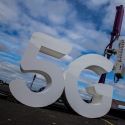
US operators such as T-Mobile and Verizon are taking their first tentative steps toward the "standalone" version of 5G with public tests of the technology. And commercial launches could happen as early as next year.
Most recently, T-Mobile announced it conducted a standalone end-to-end 5G data session with equipment from multiple vendors. "The over-the-air transmission marks a giant leap forward in realizing the true potential of 5G with new services, ultra-low latency, and even greater coverage and capacity than existing networks," the operator crowed in a release.
T-Mobile confirmed to Light Reading its test involved standalone 5G cores from Nokia and Cisco, and that the operator will launch a virtualized, commercial standalone 5G core next year. T-Mobile said it hasn't yet announced the vendor for its standalone 5G core.
T-Mobile's launch timeline for standalone 5G mostly dovetails with that of rival Verizon. The operator recently confirmed it is planning to launch a fully virtualized 5G network core in the next one to two years, a move Verizon said will shift its 5G deployment from a "non-standalone" (NSA) design to the "standalone" design.
Indeed, Verizon recently conducted tests with Ericsson of cloud-native, container-based technology that the operator described as a key part of its move to standalone 5G.
To be clear, the shift to standalone 5G is not exclusive to US operators. For example, Samsung and SK Telecom recently announced their own tests of standalone 5G.
Why this matters
All of today's 5G networks are based on the NSA version of 5G because the "standalone" version of 5G hasn't yet been finalized by the 3GPP, the wireless industry's main standards organization. Standalone 5G is expected to be approved in March 2020, when the 3GPP finishes work on "Release 16."
Today's NSA 5G is viewed as a stepping stone to "true" 5G because NSA 5G uses an LTE core and requires an LTE network as an anchor for the 5G signal. NSA 5G phones must connect to both LTE and 5G simultaneously to work. And NSA 5G mainly just supports faster download speeds.
On the other hand, standalone 5G running in a virtualized setting is expected to support all kinds of bells and whistles, from network slicing to ultra-low latency. T-Mobile, for example, promised standalone 5G will be able to power real-time augmented and virtual reality (AR/VR), cloud gaming, smart factories and connected vehicles.
But there's a catch
So when T-Mobile, Verizon and other operators start launching standalone 5G next year, should existing 5G customers expect to see immediate benefits?
Well, no. They'll need to buy new phones first.
"Current 5G devices will only support non-standalone 5G, but devices coming later this year will be capable of supporting standalone 5G when it's deployed next year," T-Mobile explained.
— Mike Dano, Editorial Director, 5G & Mobile Strategies, Light Reading | @mikeddano
About the Author(s)
You May Also Like











